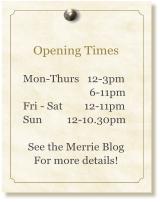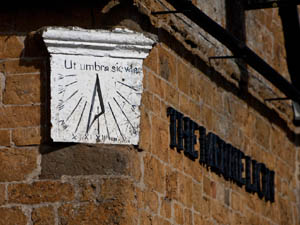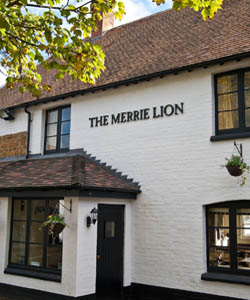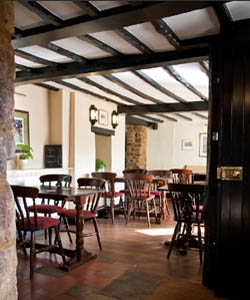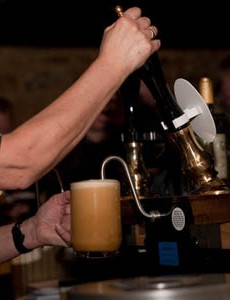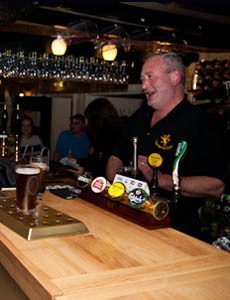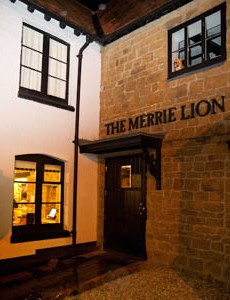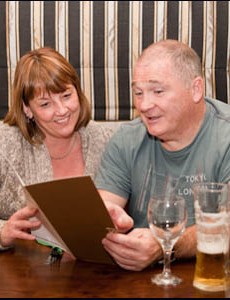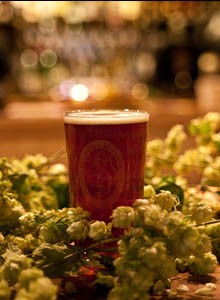Fenny History
The Merrie Lion is one of the older listed Grade II buildings in the village of Fenny Compton and dates back to at least 1710 although some think it might be even earlier. It’s thought that it may have always been an inn as the sundial on the southern corner of the house is original and these were normally only erected on community buildings. Its inscription reads ” Ut umbra sic vita‘ – “As a shadow so is life” although the last word has been defaced at some point in the past to ‘Vine’ – perhaps we should we restore it?
“The house has played host to many other businesses throughout its long existence; an abattoir a coal merchant, a brewery and even the village Fire Station has operated from the site in the past.
Village resident Roy Jenkins who ran the Fenny Fire Station in the 1990s recalled that when his father was a fireman in the National Fire Service during WW2, the pub’s Landlord, a Mr Brenchley, doubled as the Captain of the fire service and stored the pump in the Pub’s outbuildings. “If you didn’t live near the river or the canal, and your house caught fire – there was little chance of saving it!”. In those days there was another pub in the village call the Victoria Arms. Regrettably the ‘Old Vic’ burnt down during the war – but we assume the Firemen from the Merrie Lion tried equally hard to put it out!
The old picture of the pub on the front page shows that the pub was called ‘The Red Lion’ and changed its name during the 1950s.
The Story of the Village
The name Fenny Compton comes from the Anglo-Saxon Fennig Cumbtūn = “marshy farmstead in a valley“. The valley here was formed at the end of the last ice age. When the retreating glacier created a huge proglacial lake (‘Lake Harrison’) which covered most of the Midlands around Warwick, Birmingham and Leicester. Finally the lake made two courses – one became the River Avon which goes through Stratford – the other came through what became known as the ‘Fenny Compton Gap’.
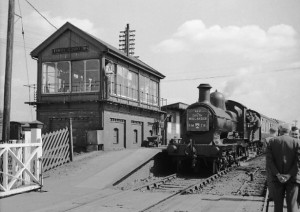 It was this valley that influenced the route of the Grand Union Canal and the two train lines which all go through the village. For many years Fenny Compton had an importance to the railways that did not reflect its rural location. There was a joint Railway Station which served both the GWR and the S&MJR tracks although the closure of the Midland Railway also saw the end of the Station. Fenny Compton’s Rail history is complex and interesting, to read more we recommend you read the late Arthur Jordan’s book The Stratford upon Avon and Midland Junction Railway published by OPC.
It was this valley that influenced the route of the Grand Union Canal and the two train lines which all go through the village. For many years Fenny Compton had an importance to the railways that did not reflect its rural location. There was a joint Railway Station which served both the GWR and the S&MJR tracks although the closure of the Midland Railway also saw the end of the Station. Fenny Compton’s Rail history is complex and interesting, to read more we recommend you read the late Arthur Jordan’s book The Stratford upon Avon and Midland Junction Railway published by OPC.
Many of our ‘regulars’ have tales to tell about the village and we’re always interested to learn more. For instance there’s the notorious story of the local policeman who in 1886 was found murdered and floating in the canal. This was P.C. Hine who left home for duty and was never seen alive again. Some days later his body was found in the canal and it was thought he had been murdered by a gang of poachers. Despite extensive enquiries, however, the murderers were never traced!
And then of course there’s the story about the Ghost seen in the hills of nearby Burton Dassett…

